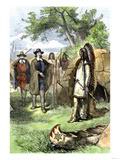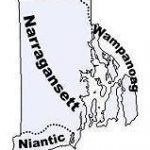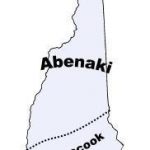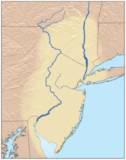Native American Women in New England
The Wampanoag, a North American Indian tribe of Eastern Algonquian linguistic stock, inhabited the territory around Narragansett Bay in present-day Rhode Island and Massachusetts. They occupied approximately 30 villages in this region and controlled the lands east of the bay, including the islands of Martha’s Vineyard and Nantucket.
Food and Shelter
Like other Algonquians in southern New England, the Wampanoag were a horticultural people. Families gathered together in the spring to fish, in early winter to hunt, and in the summer they separated to cultivate individual planting fields. The three sisters, corn, beans, and squash were the staples of their diet.
After the autumn harvest, the Wampanoag moved inland and separated into winter hunting camps of extended families. Since New England was heavily populated before 1600, these hunting territories were usually defined to avoid conflict.
Women were trained from their earliest years to work diligently in the fields and around the family wetu, a round or oval house that was designed to be easily dismantled and moved in just a few hours. Women were responsible for up to seventy-five percent of all food production, and the gathering of wild fruits, nuts, berries, and shellfish.
Since the Wampanoag primarily relied on goods from this kind of work, women had an appreciably greater economic, and spiritual role in their respective communities than their European counterparts. Young girls learned by following their mothers, aunts, and elders of the community. They watched the women gather wood, light fires, and cook food for the family.
Wampanoag women were also responsible for making the clothing for their family, which they made from the skins of deer and rabbit. The women and girls usually wore long dresses and sometimes leggings. In cooler weather, they wore robes made mainly from deer, black bear, or moose. They also weaved blankets of sheep’s wool to wrap around them for warmth. The sheep’s wool was also dyed using plant materials and used to make rugs and clothing.
Wetus were usually made for a single family and were big enough to accommodate the mother, father, and the children. The wetu had benches for sitting or sleeping. The beds were covered with deerskin. A fire pit was in the center of the wetu, under a hole in the roof. The fire heated the house and was also used for cooking.
Community
The Wampanoag were organized into a confederation, where a head sachem (chief) presided over a number of other sachems and sagamores—subordinate chiefs. Each community had authority over a well-defined territory from which the people derived their livelihood through a seasonal round of fishing, planting, harvesting and hunting.
Hereditary status and claims to land were passed down matrilinealy—through women. Mothers with specific plots of land used for farming or hunting passed those down to their female descendants, regardless of their marital status.
Female Sachems
Both women and men could hold the position of sachem. In the absence of a suitable male heir, it was not uncommon among the Wampanoag for a woman to become the sachem (queen or squaw-sachem).
Two Martha’s Vineyard and Nantucket Wampanoag female sachems, Wunnatuckquannumou and Askamaboo, ruled despite competition by male contenders. These women gained power because their matrilineal clans controlled large plots of land, and because they had accrued status and power—not because they were the widows of former sachems.
Weetamoo
Weetamoo was a Pocasset Wampanoag Native American woman. She was the wife of Wamsutta, the eldest son of Massasoit—the Wampanoag sachem who signed a treaty of friendship with the Pilgrims in 1621, giving them permission to occupy approximately 12,000 acres of what was to become Plymouth Plantation.
After Massasoit died, Wamsutta became sachem of the tribe. The Wampanoag joined the English against the Narragansett tribe, but the English broke this treaty, and Wamsutta became sick and died during talks with the English.
Believing that the English were somehow responsible for the death of Wamsutta, Weetamoo and her brother-in-law, Metacomet—the husband of Weetamoo’s younger sister—attacked the English in June 1675. This began the conflict now known as King Philip’s War.
The English defeated the Wampanoag tribe in August 1676. Weetamoo drowned in the Taunton River trying to escape. Her dead body was mutilated, and her head was displayed on a pole by the English, amidst much weeping by her warriors.
The Wampanoag People now have their own reservation on Martha’s Vineyard. They have their own government, laws, police, and other services, just like a small country. But they are also United States citizens and must obey American law. There are about 300 there, but many other people of Wampanoag descent live elsewhere in Massachusetts and Rhode Island.
SOURCES
Wikepedia: Weetamoo







Thank you.
Can you tell me about my ancestor Sarah Greene Tefft?
I see there is much about her father and about her second husband Joshua Tefft but is there anything known about her mother and about her Wampanoag family?